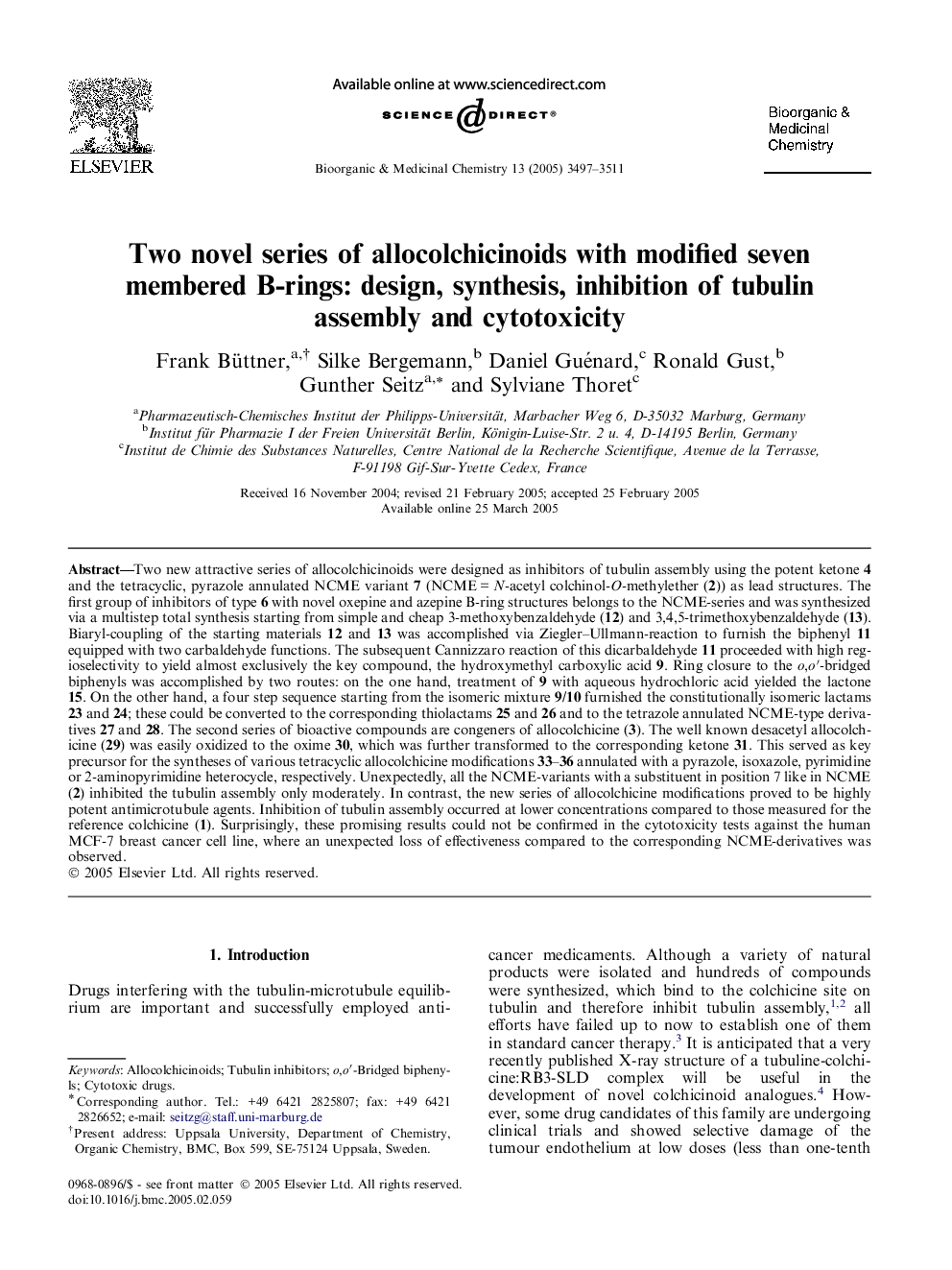| کد مقاله | کد نشریه | سال انتشار | مقاله انگلیسی | نسخه تمام متن |
|---|---|---|---|---|
| 1366291 | 981587 | 2005 | 15 صفحه PDF | دانلود رایگان |

Two new attractive series of allocolchicinoids were designed as inhibitors of tubulin assembly using the potent ketone 4 and the tetracyclic, pyrazole annulated NCME variant 7 (NCME = N-acetyl colchinol-O-methylether (2)) as lead structures. The first group of inhibitors of type 6 with novel oxepine and azepine B-ring structures belongs to the NCME-series and was synthesized via a multistep total synthesis starting from simple and cheap 3-methoxybenzaldehyde (12) and 3,4,5-trimethoxybenzaldehyde (13). Biaryl-coupling of the starting materials 12 and 13 was accomplished via Ziegler–Ullmann-reaction to furnish the biphenyl 11 equipped with two carbaldehyde functions. The subsequent Cannizzaro reaction of this dicarbaldehyde 11 proceeded with high regioselectivity to yield almost exclusively the key compound, the hydroxymethyl carboxylic acid 9. Ring closure to the o,o′-bridged biphenyls was accomplished by two routes: on the one hand, treatment of 9 with aqueous hydrochloric acid yielded the lactone 15. On the other hand, a four step sequence starting from the isomeric mixture 9/10 furnished the constitutionally isomeric lactams 23 and 24; these could be converted to the corresponding thiolactams 25 and 26 and to the tetrazole annulated NCME-type derivatives 27 and 28. The second series of bioactive compounds are congeners of allocolchicine (3). The well known desacetyl allocolchicine (29) was easily oxidized to the oxime 30, which was further transformed to the corresponding ketone 31. This served as key precursor for the syntheses of various tetracyclic allocolchicine modifications 33–36 annulated with a pyrazole, isoxazole, pyrimidine or 2-aminopyrimidine heterocycle, respectively. Unexpectedly, all the NCME-variants with a substituent in position 7 like in NCME (2) inhibited the tubulin assembly only moderately. In contrast, the new series of allocolchicine modifications proved to be highly potent antimicrotubule agents. Inhibition of tubulin assembly occurred at lower concentrations compared to those measured for the reference colchicine (1). Surprisingly, these promising results could not be confirmed in the cytotoxicity tests against the human MCF-7 breast cancer cell line, where an unexpected loss of effectiveness compared to the corresponding NCME-derivatives was observed.
NCME modifications with substituted oxepine and azepine B-ring structures and allocolchicine variants with B-ring annulated heterocycles were synthesized and evaluated for their antimicrotubule and cytotoxic activities.Figure optionsDownload as PowerPoint slide
Journal: Bioorganic & Medicinal Chemistry - Volume 13, Issue 10, 16 May 2005, Pages 3497–3511